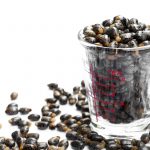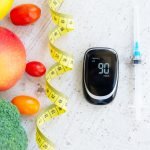When Testosterone Drops: Anti-Aging for Male Baby Boomers
Janice Seibert, ND
Naturopathic Perspective
The testes, unlike the ovaries, are capable of making testosterone well past the age of 70. Compared to women, men do not experience an abrupt reduction in endogenous sex hormone production.1 Rather, testosterone decline in men is a gradual process, occurring at approximately 1% per year, beginning at 30-40 years of age.2 Testosterone levels may decrease more dramatically with acute illness, (eg, myocardial infarction, trauma), and with chronic diseases (eg, diabetes, liver and renal diseases).3 Additionally, certain medications, such as opiates and steroids, as well as chronic alcohol addiction, can lower testosterone levels over time.4 Declines in testosterone levels may be reversible with recovery from acute and chronic illness, discontinuation of opiates or steroids, weight loss, and exercise programs.5
Andropause, or age-related hypogonadism, usually occurs between the ages of 45 and 55 when a man’s drop in testosterone levels can lead to a reduction in endurance and sex drive. Testosterone replacement can produce a significant improvement in various health issues, such as erectile dysfunction, bone health, fatigue, depression, cardiovascular, and prostate health.
Baseline testing for testosterone should be considered when men are at peak levels prior to age 20. Teen physical exams very rarely include a check of blood levels of total testosterone (normal = 300-1100 ng/dL).6 Instead, most doctors rely on observation, using Male Tanner Staging as the standard to determine whether a young male patient has adequate levels of sex hormones.
From personal clinical experience, I have seen men in their early 20s with total testosterone levels below 400 ng/dL. Additionally, any male patient under 40 years old with a total testosterone level less than 250 ng/dL, requires laboratory workup to rule out pituitary tumors, as well as an endocrinologist referral for magnetic resonance imaging (MRI).7
Low Testosterone in Men
A 50-year-old male comes in your office with complaints of erectile dysfunction, weight gain, fatigue, and nocturia. He brings in his recent laboratory test results ordered by his primary-care physician. Lab results reveal high hemogloblin A1c, elevated total- and LDL-cholesterol, and a total testosterone level of 350 ng/dL. He is told by his PCP that this level is within the normal testosterone range; hence, no prescription for testosterone is needed.
As naturopathic physicians, it is our responsibility to monitor and educate our male patients about the long-term effects of low testosterone levels and its impact on developing chronic diseases in the future.
CV Health – It’s All About the Flow
Age-related low testosterone levels have been linked to higher risk of cardiovascular problems in men.9 Unfortunately, data from randomized, controlled trials to examine the safety and/or efficacy of widespread TRT supplementation for aging men is limited.10 It remains unclear whether low testosterone levels actually cause heart problems. Erectile dysfunction is known to be a warning sign for possible existing cardiovascular problems.
On the other hand, clinical studies of men who abused anabolic androgenic steroids (AAS) have clearly demonstrated a higher risk of myocardial infarction and sudden cardiac death.11 Among the most striking AAS side effects are increases in hematocrit and coagulation, which predispose to thromboembolism, intra-cardiac thrombosis, and stroke, as well as cardiac disturbances such as arrhythmias, cardiomyopathy, and possible sudden death.12 Elevated levels of homocysteine (>8 umol/L) can damage endothelial cells, allowing for the genesis of vascular disease.13
Using flow-mediated vasodilation of the brachial artery, a Japanese study investigated whether a low plasma testosterone level was related to endothelial dysfunction in middle-aged men with coronary risk factors. Findings revealed an association between low testosterone and endothelial dysfunction independent of other risk factors, suggesting a protective effect of endogenous testosterone on the endothelium.14
Relevant Laboratory Testing
Before male patients start TRT, a baseline Prostate-Specific Antigen (PSA) blood value should be obtained, to screen for prostate cancer. Baseline values of other key laboratory markers should also be run (see Table 1) and frequently monitored with follow-up testing.
Table 1. Key Laboratory Markers for TRT Management
| Complete Blood Count
Hemogloblin Hematocrit |
Comprehensive Metabolic Panel
Glucose/Insulin Lipids |
Free & Total Testosterone
Luteinizing Hormone (LH) |
| Estradiol | Dihydrotestosterone | DHEA |
| Homocysteine
Fibrinogen C-Reactive Protein (hs-CRP) |
Sex Hormone-Binding Globulin (SHBG)
Thyroid-Stimulating Hormone (TSH) |
Prostate-Specific
Antigen (PSA) |
Free testosterone represents the active (unbound) form of the hormone. For optimal age-related management of TRT, a target goal for free testosterone levels is 20-25 pg/mL.15
Aromatization converts testosterone to estradiol. As a result, estradiol levels should be regularly monitored in a male patient on TRT. Estradiol should ideally be between 20 and 30 pg/mL in order to minimize estrogen-induced increases in sex hormone-binding globulin (SHBG) that can bind free testosterone, thereby reducing its activity in the body.16
Opioids & TRT
According to Katz and Mazer’s review paper, symptoms of opioid-induced hypogonadism may be directly linked to suppression of gonadotropin-releasing hormone.19 Given the overprescribed chronic opioid prescriptions across America, all men should be monitored for low testosterone, along with growth hormone, DHEA-sulfate, and cortisol levels.
Testosterone Therapy
Benefits of TRT
Low free testosterone has been almost exclusively linked to sexual difficulties, and there is no doubt that testosterone replacement therapy (TRT) can revive a man’s libido as well as his ability to maintain an erection. TRT can also restore intensity to his orgasms. Along with its sexual benefits, TRT can improve a man’s mood and energy level while also reducing irritability and anger.8
Risks of TRT
Using TRT in aging males is not without risk. Testosterone supplementation has been linked to prostate cancer, benign prostatic hyperplasia, polycythemia, reduced spermatogenesis, and obstructive sleep apnea.17
Contrary to many doctors’ assumptions about prostate cancer and TRT, Dr Abraham Morgentaler’s research, examining 13 men with symptomatic hypogonadism and untreated prostate cancer who received TRT for a median of 2.5 years, demonstrated no local prostate cancer progression or distant disease from treatment.18
Natural Testosterone Boosters
Besides using TRT with aging male patients, raising free testosterone levels often involves reducing SHBG levels. Estradiol levels must be brought to optimal levels, ie, 20-30 pg/mL. Natural agents to boost testosterone include the use of topical compounded chrysin (a bioflavonoid), various extract combinations of Urtica dioica, Serenoa repens, Pygeum africanum, and diindolylmethane (DIM). DHEA supplementation is often beneficial, at 15-75 mg daily; however, it is recommended to measure DHEA-sulfate levels after 6 weeks of supplementation, along with total and free testosterone, and estradiol.
Closing Thoughts
By 2050, the US population of people over 65 years of age will be more than 80 million. Estimates by the Congressional Budget Office place long-term healthcare costs at a staggering $270 billion by 2030.20
More than ever, naturopathic medicine must lead the focus on prevention of chronic diseases. With testing and regular monitoring of free testosterone and estradiol levels, TRT for aging males may be the key to preventing early endothelial dysfunction and its long-term impact on cardiovascular disease.
References:
- Retzler K. Bioidentical Hormone Replacement Therapy. June 17, 2017. [Presentation at Hormone Synergy Conference, Portland, OR]
- Harman SM, Metter EJ, Tobin JD, et al. Longitudinal effects of aging on serum total and free testosterone levels in healthy men. Baltimore Longitudinal Study of Aging. J Clin Endocrinol Metab. 2001;86(2):724-731.
- Shores MM. The implications of low testosterone on mortality in men. Curr Sex Health Rep. 2014;6(4):235-243.
- Irwin M, Dreyfeus E, Baird S, et al. Testosterone in chronic alcoholic men. Br J Addict. 1988;83(8):949-953.
- Travison TG, Shackelton R, Araujo AB, et al. The natural history of symptomatic androgen deficiency in men: onset, progression, and spontaneous remission. J Am Geriatr Soc.2008;56(5):831-839.
- What Is a Testosterone Test? Available at: https://www.webmd.com/men/testosterone-15738#3. Accessed October 15, 2017.
- Wright J. Natural Hormones for Men. June 17, 2017. [Presentation at Restorative Medicine Regional Conference, Vancouver, BC]
- McMillen M. Low Testosterone Therapy: Risks and Benefits. 2012. WebMD Web site. https://www.webmd.com/men/features/low-testosterone-therapy-risks-benefits#2. Accessed November 13, 2017.
- Walsh JP, Kitchens AC. Testosteronetherapy and cardiovascular Trends Cardiovasc Med. 2015;25(3):250-257.
- Bagatell CJ, Bremner WJ. Androgens in men–uses and abuses. N Engl J Med. 1996;334(11):707-714.
- Hartgens F, Kuipers, H. Effects of androgenic-anabolic steroids in athletes. Sports Med. 2004;34(8):513-554.
- Nieschla E, Vorona E. Doping with anabolic androgenic steroids: Adverse effects on non-reproductive organs and functions. Rev Endocr Metab Disord. 2015;16(3):199-211.
- Riba R, Nicolaou A, Troxler M, et al. Altered platelet reactivity in peripheral vascular disease complicated with elevated plasma homocysteine levels. Atherosclerosis. 2004;175(1):69-75.
- Akishita M, Hashimoto M, Ohike Y, et al. Low testosterone level is an independent determinant of endothelial dysfunction in men. Hypertens Res. 2007;30(11):1029-1034.
- Faloon W. Physician’s Guide: Using Blood Test Findings to Safely Induce Weight Loss. June 2009. Life Extension Magazine. Available at: http://www.lifeextension.com/Magazine/2009/6/Using-Blood-Test-Findings-To-Induce-Weight-Loss/Page-02. Accessed November 13, 2017.
- Jankowska EA, Rozentryt P, Ponikowska B, et al. Circulating estradiol and mortality in men with systolic chronic heart failure. JAMA. 2009;301(18):1892-1901.
- Osterberg EC, Bernie AM, Ramasamy R. Risks of testosterone replacement therapy in men. Indian J Urol. 2014;30(1):2-7.
- Morgentaler A, Lipshultz LI, Bennett R, et al. Testosterone therapy in men with untreated prostate cancer. J Urol. 2011;185(4):1256-1260.
- Katz N, Mazer NA. The impact of opioids on the endocrine system. Clin J Pain. 2009;25(2):170-175.
- Knickman JR, Snell EK. The 2030 problem: caring for aging baby boomers. Health Serv Res. 2002;37(4):849-884.
Image Copyright: <a href=’https://www.123rf.com/profile_lightpoet’>lightpoet / 123RF Stock Photo</a>
 Jan Seibert, ND, has practiced for 15 years in the Midwest and West Coast. Dr Seibert’s clinic (Hormone Rejuvenation Center) specializes in age-management therapies and balancing hormones for men and women. For 5 years she taught clinical nutrition as an adjunct professor for the National University of Natural Medicine (Portland, OR) and for the chiropractic program at National University of Health Sciences (Lombard, IL, and Seminole, FL). In 2006, Dr Seibert received the AANP’s Research of the Year Award for her study of menopausal symptom treatment using compounded bio-identical hormones.
Jan Seibert, ND, has practiced for 15 years in the Midwest and West Coast. Dr Seibert’s clinic (Hormone Rejuvenation Center) specializes in age-management therapies and balancing hormones for men and women. For 5 years she taught clinical nutrition as an adjunct professor for the National University of Natural Medicine (Portland, OR) and for the chiropractic program at National University of Health Sciences (Lombard, IL, and Seminole, FL). In 2006, Dr Seibert received the AANP’s Research of the Year Award for her study of menopausal symptom treatment using compounded bio-identical hormones.










